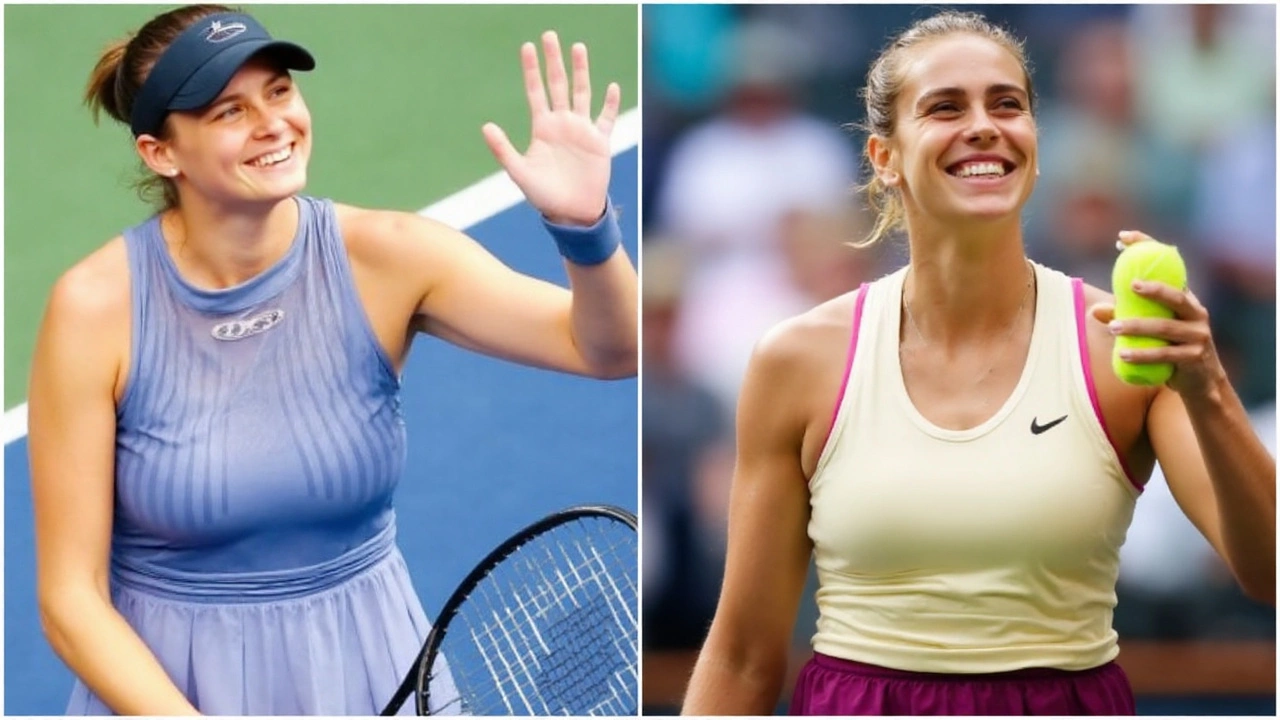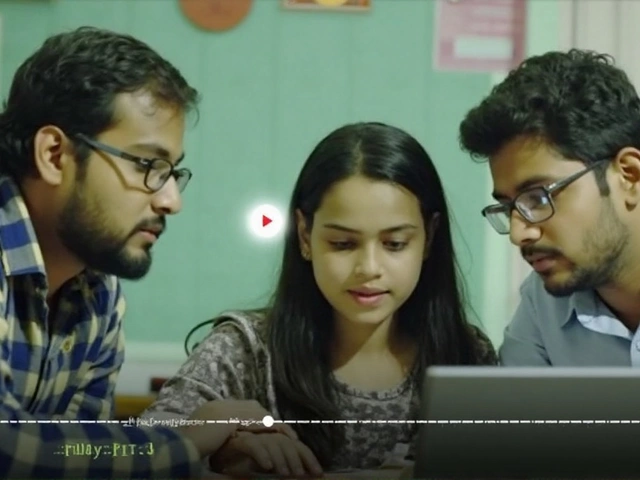Sabalenka holds firm as lights, roof, and pressure shape the final
New York got a repeat. Aryna Sabalenka defended her title at the US Open on Saturday, taking out Amanda Anisimova 6-3, 7-6 (3) inside a closed Arthur Ashe Stadium. It’s her second straight trophy in Queens and the fourth Grand Slam of her career. She’s also the first woman to win back-to-back US Opens since Serena Williams capped her three-peat in 2014.
This final had a twist before the first ball. Rain and thunderstorms forced the roof shut during the day session, a rare setup that changed the look and feel of the court. With the lights blazing against a bright afternoon sky, Anisimova struggled from the start. She told chair umpire Mirjana Veljovic she couldn’t see the ball cleanly on serve and later explained in her press conference that the court looked “literally white” to her. That visual strain became a real factor as the match moved along.
Sabalenka came in as world No. 1 and the defending champion. Anisimova brought a 6-3 head-to-head edge into the day and the kind of flat, heavy strike that usually pushes Sabalenka behind the baseline. But the matchup flipped. Sabalenka cut the risk, cut the pace when needed, and aimed for depth and height over the net rather than the spectacular winner. The numbers tell the story: 13 winners and 15 unforced errors for Sabalenka, against Anisimova’s 22 winners and 29 unforced errors. On break points, Sabalenka converted five of six. That efficiency was the gap.
The first set turned on early pressure. Sabalenka broke twice, read the Anisimova toss well, and stepped into second serves. Anisimova kept attacking—she had to, given the scoreboard and the visual issues on serve—but the misses piled up on the backhand wing. Sabalenka held to take it 6-3 with a calm service game that featured body serves and deep first balls to the middle, denying Anisimova angles.
The second set was more tense and closer to what fans expected: heavy hitting, both players edging forward and trying to take time away. Anisimova found patches of rhythm on return and broke back after a poor Sabalenka game at 3-2. But whenever the American set up a short forehand, the execution wobbled. Sabalenka’s defense—especially off the backhand—kept one more ball in play, and that extra ball drew mistakes. They landed in a tiebreak, and the world No. 1 was rock steady there, moving ahead early with deep returns and sealing it 7-6 (3).
Anisimova’s frustration wasn’t about a lack of fight. She kept stepping inside the baseline, took the ball on the rise, and refused to let Sabalenka camp on the ad-court backhand pattern. But the conditions magnified small margins. Toss placement drifted. A few forehands sailed long on big points. She was broken five times, a number you rarely survive in a Slam final. “I couldn’t see the ball when I was serving, like, the whole match,” she said afterward, describing the unusual glare under the closed roof.
Sabalenka’s change-up was the quiet star of the day. Known for first-strike power, she dialed back the sheer weight of shot and focused on directing traffic: deep middle, then corners; body serves to blunt Anisimova’s take-back; heavy cross-court backhands before sneaking a flatter drive down the line. She hit only one ace but didn’t need more. The point was to manage risk and win the big moments, not light up the stat sheet.
The context makes the win even bigger. Anisimova had won six of their nine previous matches, often by rushing Sabalenka and forcing short balls. This time the American didn’t get that steady diet of short replies. Sabalenka’s return length was better, and her feet were quicker side to side. When the rallies stretched to five, six, seven shots, the defending champion trusted her patterns and body language—shoulders relaxed, eyes flat, no panic even when a game slipped.
The noise inside Ashe added another layer. A closed roof tightens the acoustics, amplifying shouts and gasps. With an American in the final, the energy tended to swing with Anisimova’s purple patches. Sabalenka didn’t fight it; she took her time, reset on the towel, and protected her serve after breaks. Those mini-pauses, often overlooked, helped her reset the tempo when the building tilted toward the home favorite.
Here’s the snapshot of how it was won:
- Score: Sabalenka def. Anisimova 6-3, 7-6 (3)
- Winners–Unforced errors: Sabalenka 13–15; Anisimova 22–29
- Break points: Sabalenka 5/6; Anisimova 3/8
- Aces: Sabalenka 1; Anisimova struggled to land her first serve consistently under the lights
Anisimova leaves New York with a silver plate and a big leap in the rankings, up to No. 4. It’s only her second major final, a strong checkpoint in a return that has taken patience and heavy work. Her ball-striking still pops off the court, and on a clear day, with a cleaner look at her toss, this matchup likely looks tighter. In the trophy ceremony she paid tribute to Sabalenka and her team and spoke with real grace given the frustration of the day.
For Sabalenka, this is more than a defense of a title; it’s confirmation. She came through the North American summer looking settled, and in New York she showed a complete version of her game. When the opponent hit through her, she absorbed. When the match asked her to attack, she did it without forcing. You can measure dominance in highlight reels, but also in how a champion deals with awkward conditions. On that front, she aced the test.
What changed year-on-year? The second-serve intent stands out. Instead of overhitting down the T, she mixed body serves to take Anisimova’s swing away and then countered the blocked return with depth up the middle. It’s not glamorous tennis, but it’s match-winning tennis in a stadium where a couple of loose swings can flip a set. The tiebreak showed it best: a safe first point, a deep return at 2-1, a controlled backhand up the line at 4-2. No panic, no showboating, just clean choices.
The larger picture in the women’s game gets a shake, too. A repeat champion in New York is rare in this era of parity. With this win, Sabalenka keeps a tight hold on No. 1 and extends a season where her baseline level is high even on off days. That matters heading into the fall swing and the year-end championships, where she’ll carry the target on her back yet again.
As for Anisimova, the takeaways aren’t hard to find. She made a Slam final, beat tough opponents along the way, and reminded everyone why her timing off both wings is feared on hard courts. The serving issues under the roof were real, but the core of her game—clean contact, early preparation, front-foot intent—is in a good place. With the ranking boost, she’ll get better draws and more chances to settle into big stages without burning energy early in events.
It wasn’t the blockbuster three-setter some hoped for, but it was a smart, mature performance from the reigning champion and a gritty effort from the challenger in trying conditions. On a day defined by a closed roof and harsh lights, the clearest thing on court was Sabalenka’s plan—and the steady nerve to stick to it until the final ball.

What the result means for the season ahead
Two straight titles in New York put Sabalenka in rare company, and they change how opponents plan for her. The baseline pace is still there, but now coaches have to game-plan for her patience: more looping replies, more deep middle patterns, and less of the old grab-a-line-or-bust mindset. That version of Sabalenka is harder to rattle with noise, weather, or awkward bounces.
The rankings story is straightforward. Sabalenka stays No. 1. Anisimova’s climb to No. 4 gives her a clearer path at big events and a real shot at finishing the year inside the elite tier. The late-season calendar will test both: indoor conditions, quick courts, and the mental shift from two-week majors to one-week sprints. If New York is the barometer, Sabalenka carries both form and belief, while Anisimova carries proof that her ceiling is Slam-level—and not theoretical.
On Saturday, the rain came, the roof shut, and a final tilted by light and vision still served up a clear verdict. The champion adapted faster and executed cleaner. That’s what separates a nice run from a defended title.
- Poplular Tags
- US Open
- Aryna Sabalenka
- Amanda Anisimova
- women's final











